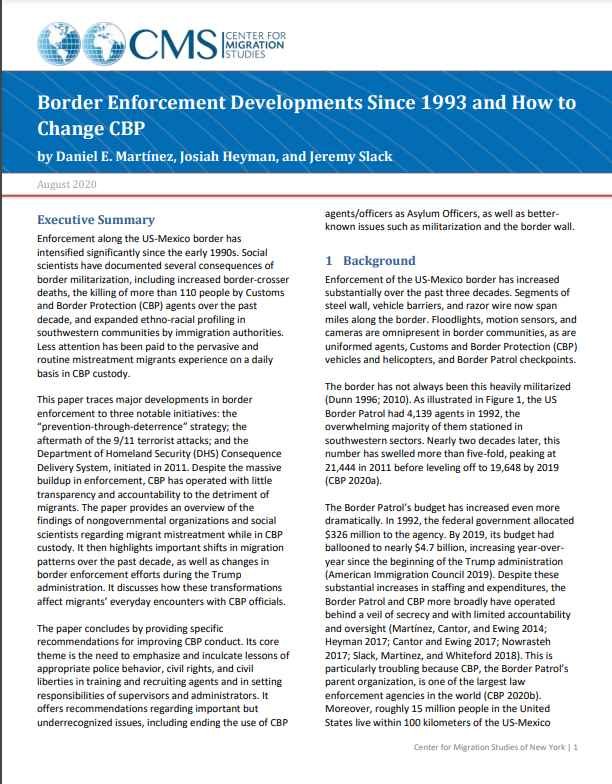By Tom K. Wong
On May 13th, 2023, the U.S. Immigration Policy Center (USIPC) at UC San Diego interviewed asylum seekers detained by Border Patrol (BP) in the Jacumba desert. Over 1,000 people seeking asylum and refuge from nearly every part of the world were held in three makeshift encampments on the U.S. side of the U.S.-Mexico border without adequate food, water, or shelter. Under the hot desert sun, the USIPC donated supplies and joined volunteers as they brought food, baby food, water, hygiene kits, clothes, blankets, diapers, and other supplies to these migrants. Using stratified random sampling during aid distribution in Camp 2, USIPC conducted fifteen structured interviews with asylum seekers. With approximately 150 people in Camp 2, these interviews represent a 10 percent sample. These data make clear that despite assertions by Border Patrol that the migrants were not being detained, they were surrounded by Border Patrol agents and would be apprehended if they tried to leave. This is consequential because those in Border Patrol custody, according to the U.S. Customs and Border Protection (CBP) National Standards on Transport, Escort, Detention, and Search (TEDS), are entitled to basic humane treatment. The asylum seekers that we interviewed were only given one water bottle each day in the morning, were not given any food, were not given any shelter to protect themselves from the sun, and were not given blankets to keep themselves warm at night. Lastly, the data show that those seeking asylum have been ignored by Border Patrol agents, have been unable to formally request asylum, and have been denied due process.
La Jolla, CA: US Immigration Policy Center University of California San Diego (UCSD), 2023. 8p.



